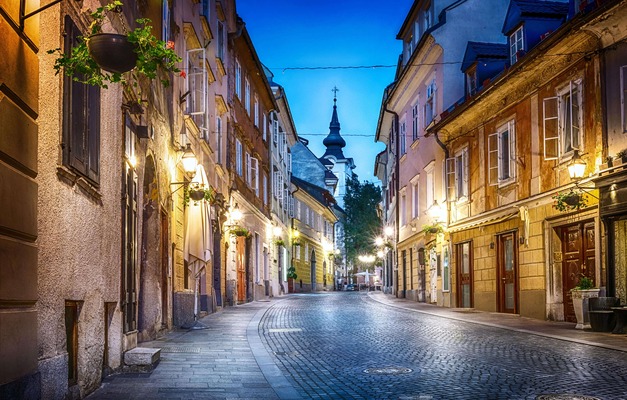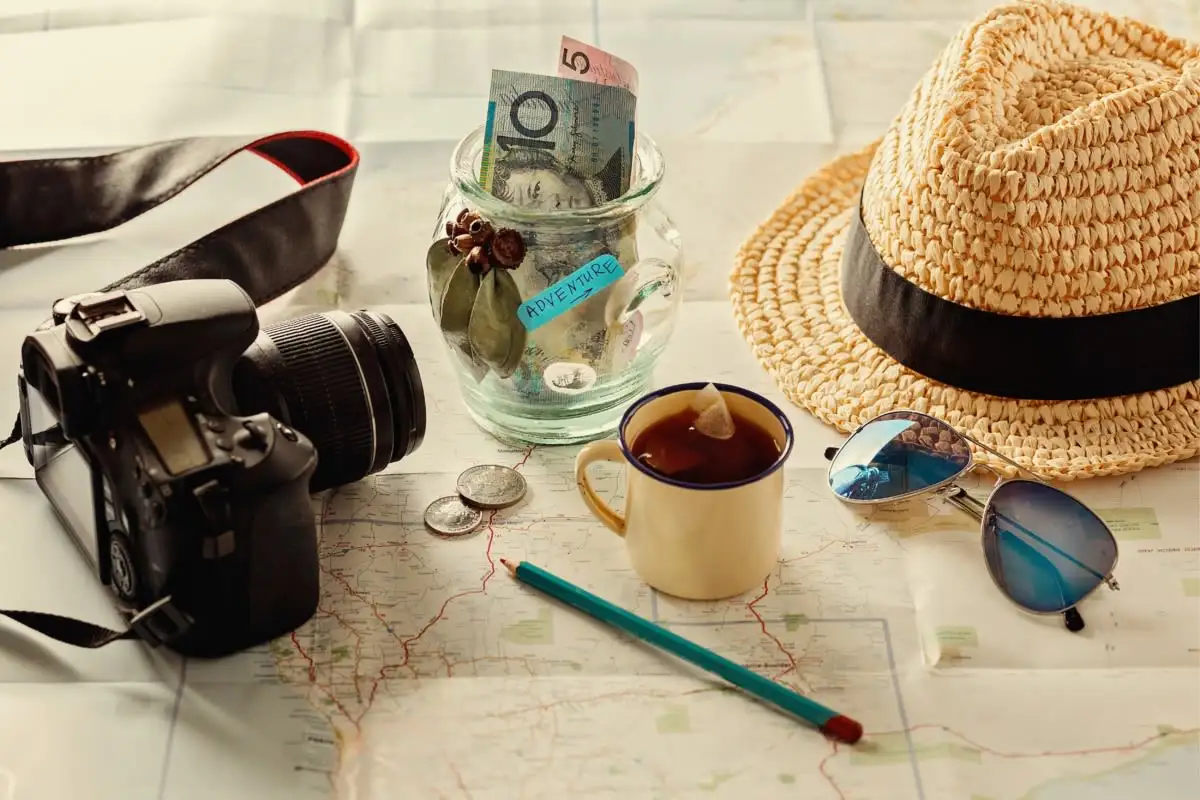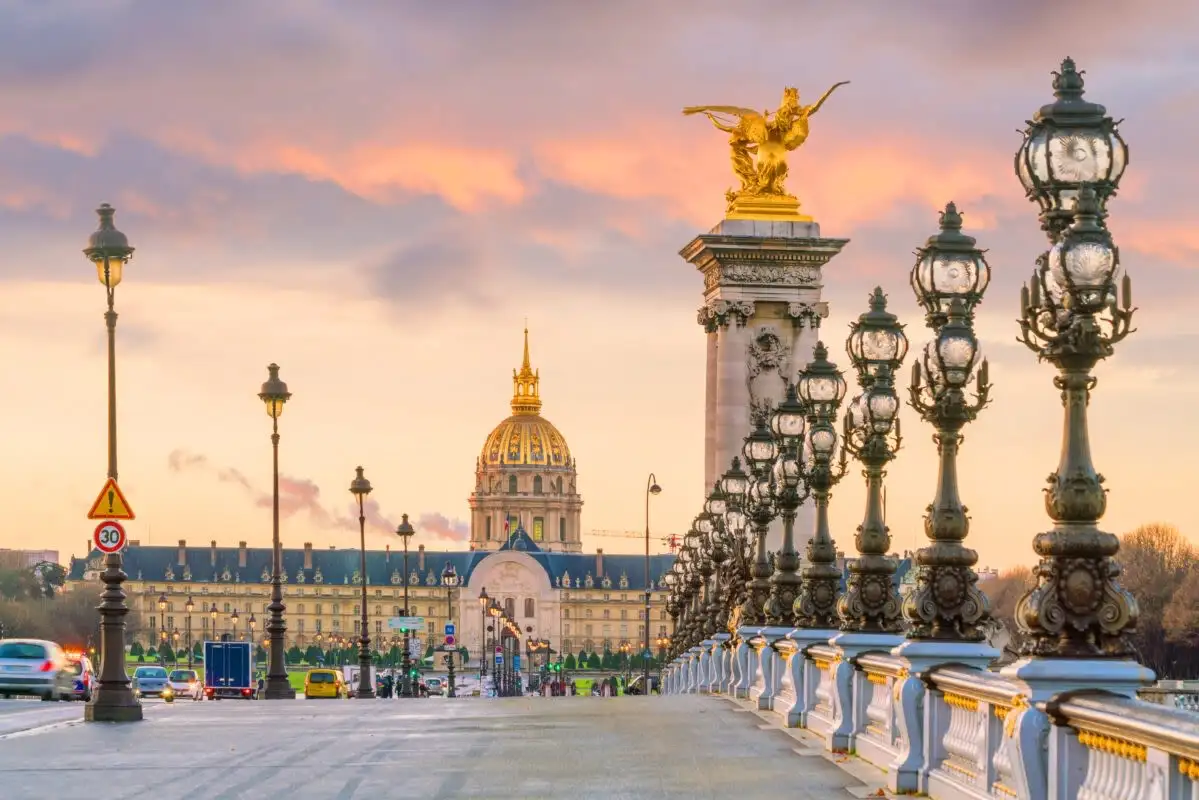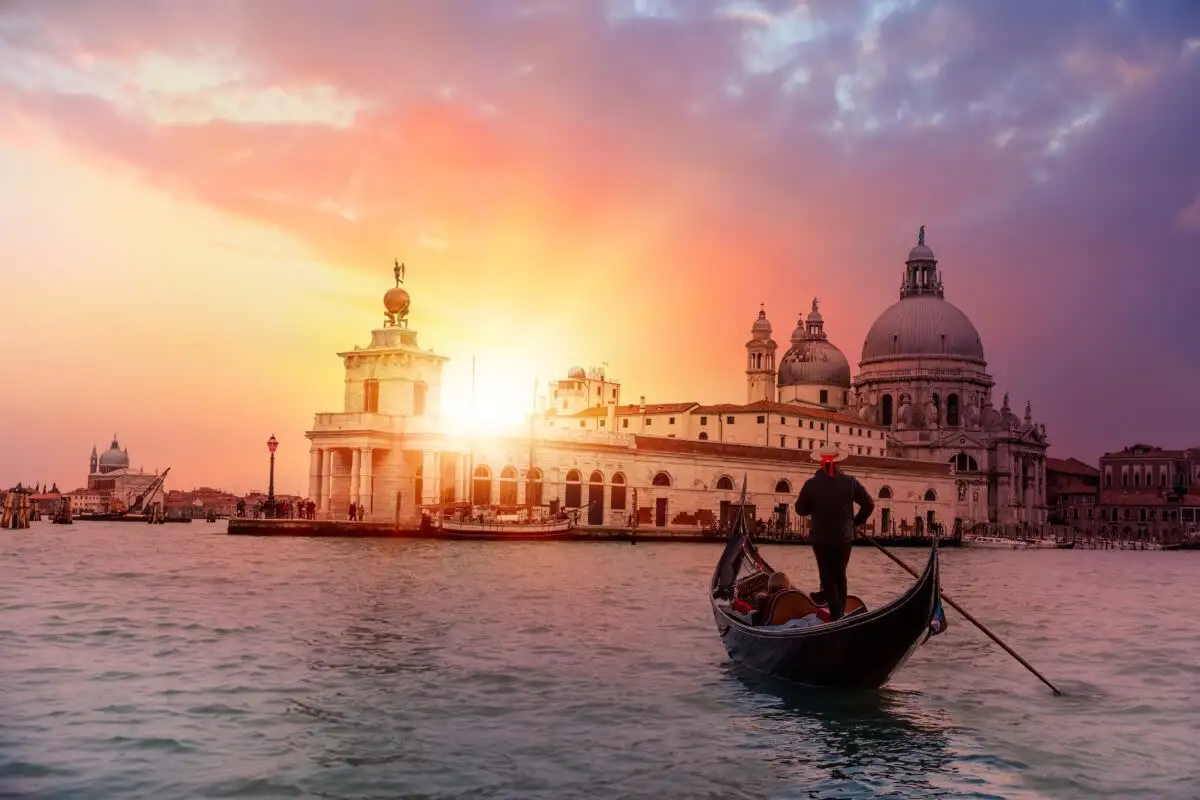
Historic Grandeur and Countryside Charm in Paris and Germany
 10 Day Tour of Paris, Heidelberg and Berlin
10 Day Tour of Paris, Heidelberg and Berlin
Overview
Trip Map
Itinerary
Inclusions
Reviews
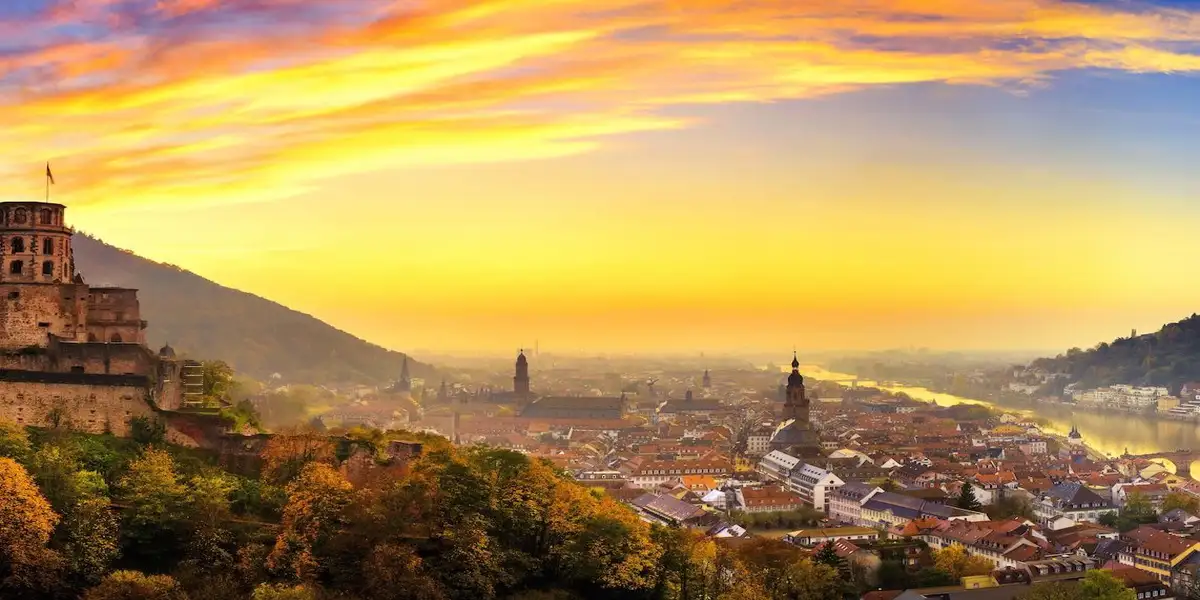


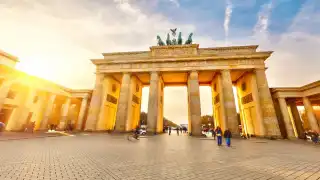



10 Days 9 Nights
Best Time: Jan-Dec
Castle & Palace Tours
Exploring Scenic Countryside
Experience the diverse charms of Europe on this journey through Paris, Heidelberg, and Berlin, blending two countries, vibrant cities, and serene countryside. Begin in the romantic streets of Paris, exploring iconic landmarks and hidden gems. Travel to Heidelberg, where history meets nature in a picturesque setting overlooked by a majestic castle. See the enchanting beauty of the Black Forest before venturing to Berlin, a city rich in both history and modernity. Easily combine historic cities and bucolic countryside with the help of guided tours and detailed travel guidance provided through our mobile app, ensuring an unforgettable trip.
- Enjoy private guided tours in Paris, including an excursion to Monet's Giverny Gardens.
- Ascend to Heidelberg Castle by funicular rail and enjoy a gentle hike along the Philosopher's Way.
- Immerse yourself in the natural beauty of Germany's Black Forest with a private guided excursion.
- Visit iconic sites in Berlin like the Brandenburg Gate, the Reichstag, and Museum Island.
- Visit Potsdam, the former home to Germany's emperors, to see its beautiful palaces and lakes.
Experience the diverse charms of Europe on this journey through Paris, Heidelberg, and Berlin, blending two countries, vibrant cities, and serene countryside. Begin in the romantic streets of Paris, exploring iconic landmarks and hidden gems. Travel to Heidelberg, where history meets nature in a picturesque setting overlooked by a majestic castle. See the enchanting beauty of the Black Forest before venturing to Berlin, a city rich in both history and modernity. Easily combine historic cities and bucolic countryside with the help of guided tours and detailed travel guidance provided through our mobile app, ensuring an unforgettable trip.
- Enjoy private guided tours in Paris, including an excursion to Monet's Giverny Gardens.
- Ascend to Heidelberg Castle by funicular rail and enjoy a gentle hike along the Philosopher's Way.
- Immerse yourself in the natural beauty of Germany's Black Forest with a private guided excursion.
- Visit iconic sites in Berlin like the Brandenburg Gate, the Reichstag, and Museum Island.
- Visit Potsdam, the former home to Germany's emperors, to see its beautiful palaces and lakes.

Eiffel Tower
Historic Landmarks

Louvre Museum
Museums & Galleries

Arc de Triomphe
Architecture

Heidelberg Castle
Castles & Chateaux

Church of the Holy Spirit
Churches & Monasteries

Old Bridge
Architecture

The Brandenburg Gate
Historic Landmarks

The Berlin Wall
Historic Landmarks

Checkpoint Charlie
European History
Must see sights

Eiffel Tower
Historic Landmarks

Louvre Museum
Museums & Galleries

Arc de Triomphe
Architecture

Heidelberg Castle
Castles & Chateaux

Church of the Holy Spirit
Churches & Monasteries

Old Bridge
Architecture

The Brandenburg Gate
Historic Landmarks

The Berlin Wall
Historic Landmarks

Checkpoint Charlie
European History
Starting from
$3390
per person
 Not included
Not included Secure Your Customizable Trip
Enter your details to embark on a journey that can be tailored just for you.
Start
Travelers
0 travelers
Add Room
Remove Room
Preferred Hotel Stars
Select Hotel Stars
Craft Your Own Itinerary
Select your interests and destinations for a trip plan inspired by you.
Adventure in Paris & Germany Trip - Map & Itinerary
Enable/Disable Map Scrolling
Click To Make Map Interactive

Adventure in Paris & Germany Trip Timeline
 Edit Details
Edit DetailsArrival
3 nights
Paris
France
Train: 3.5h
Train: 0.5h
3 nights
Heidelberg
Germany
Train: 0.5h
Train: 5h
3 nights
Berlin
Germany
Departure
Day-By-Day Itinerary of Adventure in Paris & Germany Trip
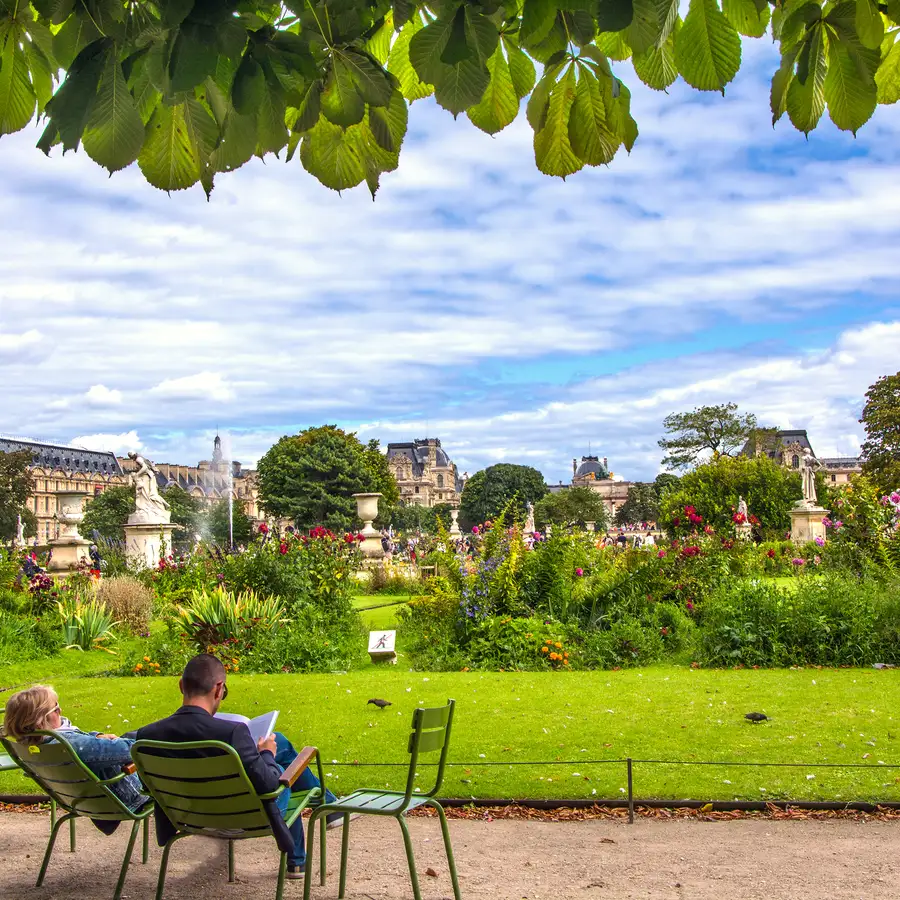
Day 1
Arrive Paris
Day 1
Arrive Paris



To Be Determined
Airport Taxi Pick-Up
Upon arrival at one of Paris's Charles de Gaulle or Orly Airports, it's fairly easy to catch a taxi from outside the main terminal building to your hotel. This is cheaper than a pre-arranged private transfer, although that option is also available if you wish - just ask your consultant. Parisien taxi drivers are generally reliable and honest, but we will provide you with instructions on how to avoid possible scammers and charlatans. If you want to save money, and often quite a lot of time as well, we will also give you alternative instructions on taking public transport into the city center. Details are contained in the full itinerary and mobile app available to our travelers. If on the other hand, you are arriving at Paris's third airport, Beauvais Airport (BVA), then you should always take the shuttle bus. The taxi fare might cost more than the flight - it's nearly 50 miles (75km) outside the city.

Day 1
Arrive Paris


Day 1
Arrive Paris




To Be Determined:
Airport Taxi Pick-Up
Mid-Day/Afternoon:
Tuileries Gardens & Nearby Museums
Late Afternoon:
Arc de Triomphe


Day 2
Paris
Day 2
Paris



9:00 AM - 1:00 PM
Paris Highlights Walking Tour
Embark on a captivating 4-hour walking tour of the center of Paris, the City of Lights, where history and modernity blend seamlessly along its enchanting streets. Starting from your accommodation, you will explore the heart of this dynamic city and learn how to navigate Paris as a local.

Day 2
Paris



Day 3
Paris
Day 3
Paris



9:30 AM - 2:30 PM
Monet in Giverny
With a private guide, Giverny, the long-time residence of the artist Claude Monet, reveals it genius loci, and its attraction to this 'Father of Impressionism'. Filled with life, color, and artworks, Monet's house is a special experience; moreso, the gardens at Giverny are truly sumptuous. Lovers of Monet's paintings will quickly recognize the bridge and pond that inspired Monet's Water Lilies series, some of the most beautiful and famous paintings of all time. This excursion takes half a day and includes a pick up and drop off from your hotel in Paris with a fully-licensed guide.

Day 3
Paris


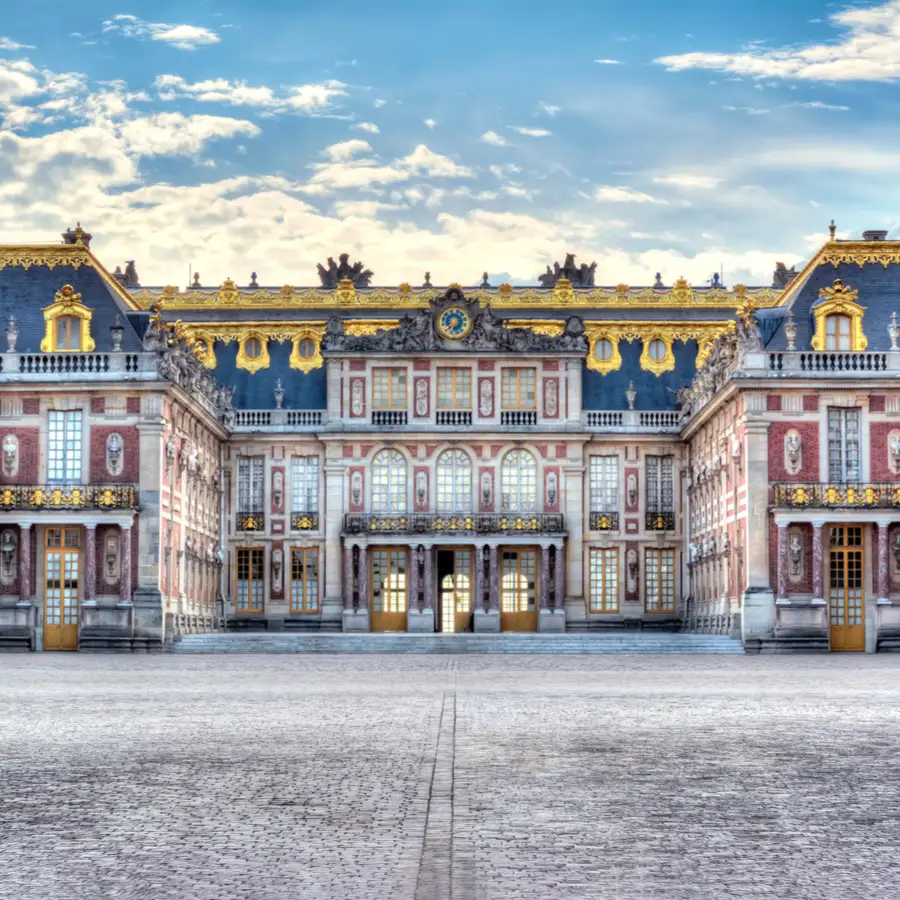
Day 4
Paris to Heidelberg
Day 4
Paris to Heidelberg




Early Morning to Afternoon
Palace of Versailles
The Château of Versailles, a symbol of the grandeur of French monarchy, invites visitors to explore its lavish history and architectural majesty. From the spellbinding elegance of the Hall of Mirrors, where the Treaty of Versailles was signed, to the vast, meticulously manicured Gardens the pinnacle of French garden design, every corner tells a story of opulence and power. Discover the intimate escapes of royalty at the Grand and Petit Trianon, and marvel at the divine beauty of the Royal Chapel, a masterpiece of Baroque architecture.

The Queen's Hamlet
Imagine living like the "peasants" here?
Show More

Parc de Versailles
Feel like a king, feel like a queen, hopefully you'll feel good looking out across the park
Show More

Main Palace of Versailles
There are palaces, and then there is Versailles...
Show More

The Queen's Hamlet
Imagine living like the "peasants" here?
Show More

Parc de Versailles
Feel like a king, feel like a queen, hopefully you'll feel good looking out across the park
Show More

Main Palace of Versailles
There are palaces, and then there is Versailles...
Show More

The Queen's Hamlet
Imagine living like the "peasants" here?
Show More
prev
next

Day 4
Paris to Heidelberg

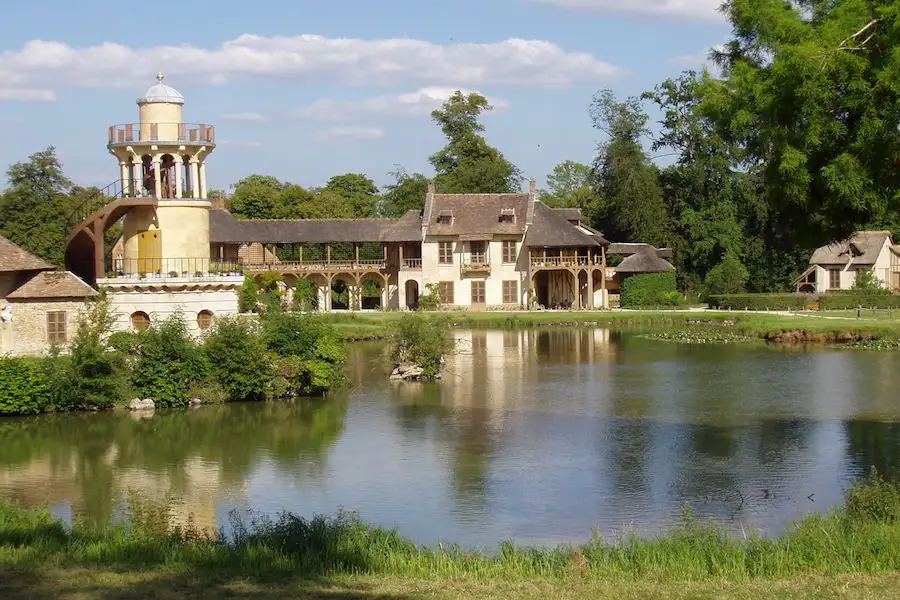
The Queen's Hamlet
 Highlight of Palace of Versailles
Highlight of Palace of VersaillesImagine living like the "peasants" here?
Desiring something different, Queen Marie Antoinette had a hamlet erected where she could supervise servants milking cows, tending pigs, collecting eggs from chickens. She dressed down to play her part, but apparently never got her hands dirty, as far as we know. Her peasant cottage only had two living rooms, a billiard room, a dining hall, and a library. If you are accustomed to palaces, only two living rooms is roughing it. Lest the queen got tired of it all, she could return to the Petit Trianon, a beautiful chateau built on the grounds of the Grand Trianon, which was the retreat chateau built on the grounds of the Palace of Versailles, which was a retreat from the Louvre Palace in Paris.
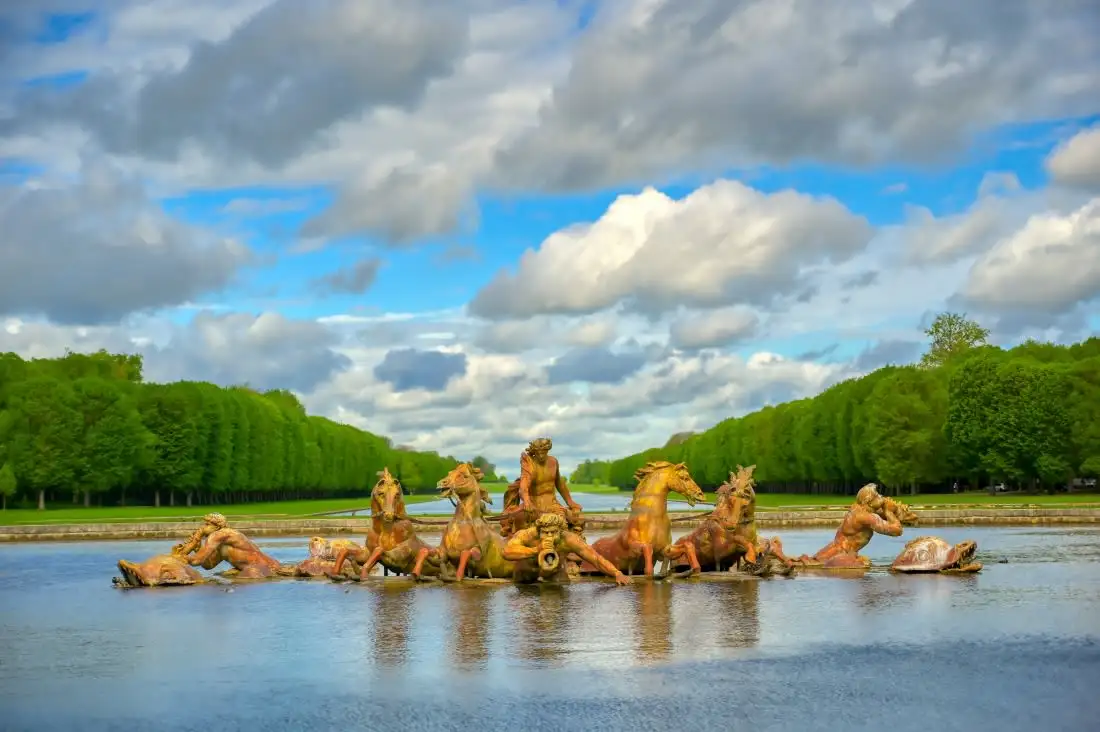
Parc de Versailles
 Highlight of Palace of Versailles
Highlight of Palace of VersaillesFeel like a king, feel like a queen, hopefully you'll feel good looking out across the park
The Parc de Versailles, features some 800 hectares of manicured lawns, stunning fountains, and the Grand Canal, all masterminded by André Le Nôtre. Highlights include the Neptune and Apollo Fountains, the Trianon Palaces, and the Queen's Hamlet. This vast garden symbolizes royal power, but you are welcomed to enjoy yourself on these pleasure grounds.
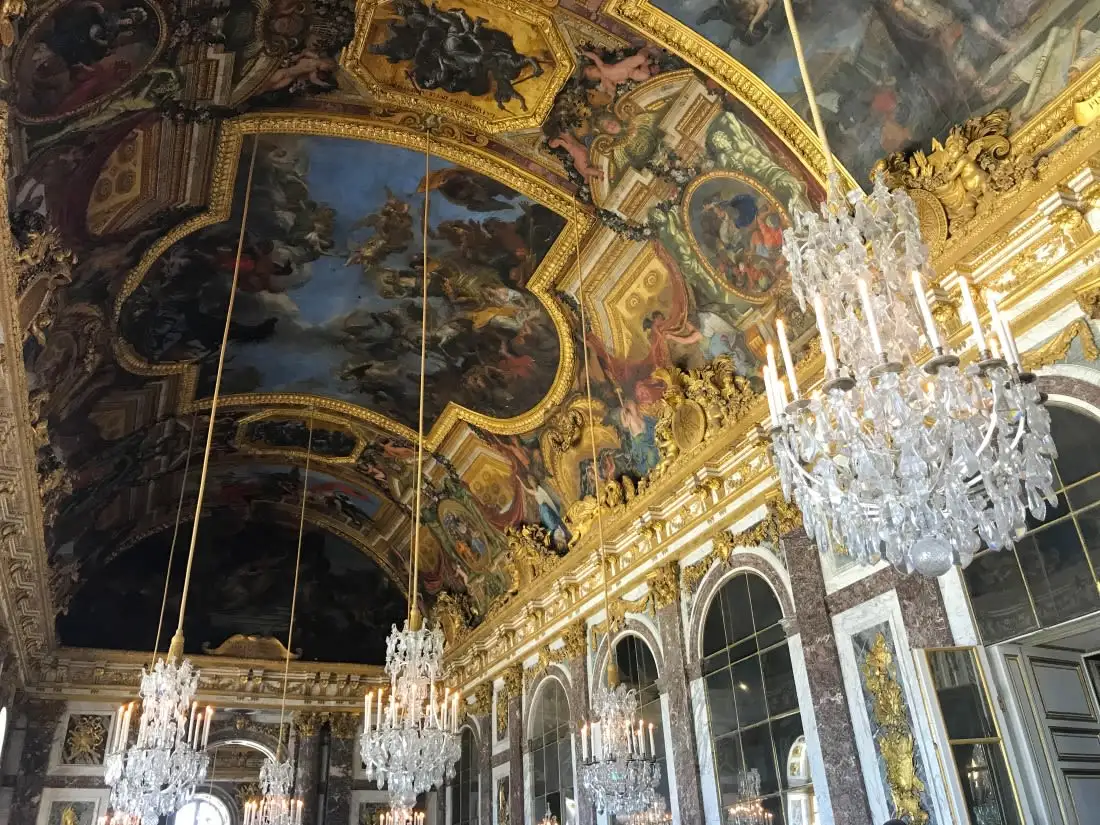
Main Palace of Versailles
 Highlight of Palace of Versailles
Highlight of Palace of VersaillesThere are palaces, and then there is Versailles...
Enlarged by for Emperor Louis XIV as an escape from the dreary political tension of Paris, Versailles might have been the most luxurious palace in the world. Even now, the building stuptifies with its grandeur and elegance, a stunning representation of the French monarchy's opulence. The famous Hall of Mirrors is just one of many, many (2300!) stunning rooms, only a small percentage of which are open for display. It might be too much, or one visit might never be enough.

The Queen's Hamlet
 Highlight of Palace of Versailles
Highlight of Palace of VersaillesImagine living like the "peasants" here?
Desiring something different, Queen Marie Antoinette had a hamlet erected where she could supervise servants milking cows, tending pigs, collecting eggs from chickens. She dressed down to play her part, but apparently never got her hands dirty, as far as we know. Her peasant cottage only had two living rooms, a billiard room, a dining hall, and a library. If you are accustomed to palaces, only two living rooms is roughing it. Lest the queen got tired of it all, she could return to the Petit Trianon, a beautiful chateau built on the grounds of the Grand Trianon, which was the retreat chateau built on the grounds of the Palace of Versailles, which was a retreat from the Louvre Palace in Paris.

Parc de Versailles
 Highlight of Palace of Versailles
Highlight of Palace of VersaillesFeel like a king, feel like a queen, hopefully you'll feel good looking out across the park
The Parc de Versailles, features some 800 hectares of manicured lawns, stunning fountains, and the Grand Canal, all masterminded by André Le Nôtre. Highlights include the Neptune and Apollo Fountains, the Trianon Palaces, and the Queen's Hamlet. This vast garden symbolizes royal power, but you are welcomed to enjoy yourself on these pleasure grounds.

Main Palace of Versailles
 Highlight of Palace of Versailles
Highlight of Palace of VersaillesThere are palaces, and then there is Versailles...
Enlarged by for Emperor Louis XIV as an escape from the dreary political tension of Paris, Versailles might have been the most luxurious palace in the world. Even now, the building stuptifies with its grandeur and elegance, a stunning representation of the French monarchy's opulence. The famous Hall of Mirrors is just one of many, many (2300!) stunning rooms, only a small percentage of which are open for display. It might be too much, or one visit might never be enough.

The Queen's Hamlet
 Highlight of Palace of Versailles
Highlight of Palace of VersaillesImagine living like the "peasants" here?
Desiring something different, Queen Marie Antoinette had a hamlet erected where she could supervise servants milking cows, tending pigs, collecting eggs from chickens. She dressed down to play her part, but apparently never got her hands dirty, as far as we know. Her peasant cottage only had two living rooms, a billiard room, a dining hall, and a library. If you are accustomed to palaces, only two living rooms is roughing it. Lest the queen got tired of it all, she could return to the Petit Trianon, a beautiful chateau built on the grounds of the Grand Trianon, which was the retreat chateau built on the grounds of the Palace of Versailles, which was a retreat from the Louvre Palace in Paris.
prev
next

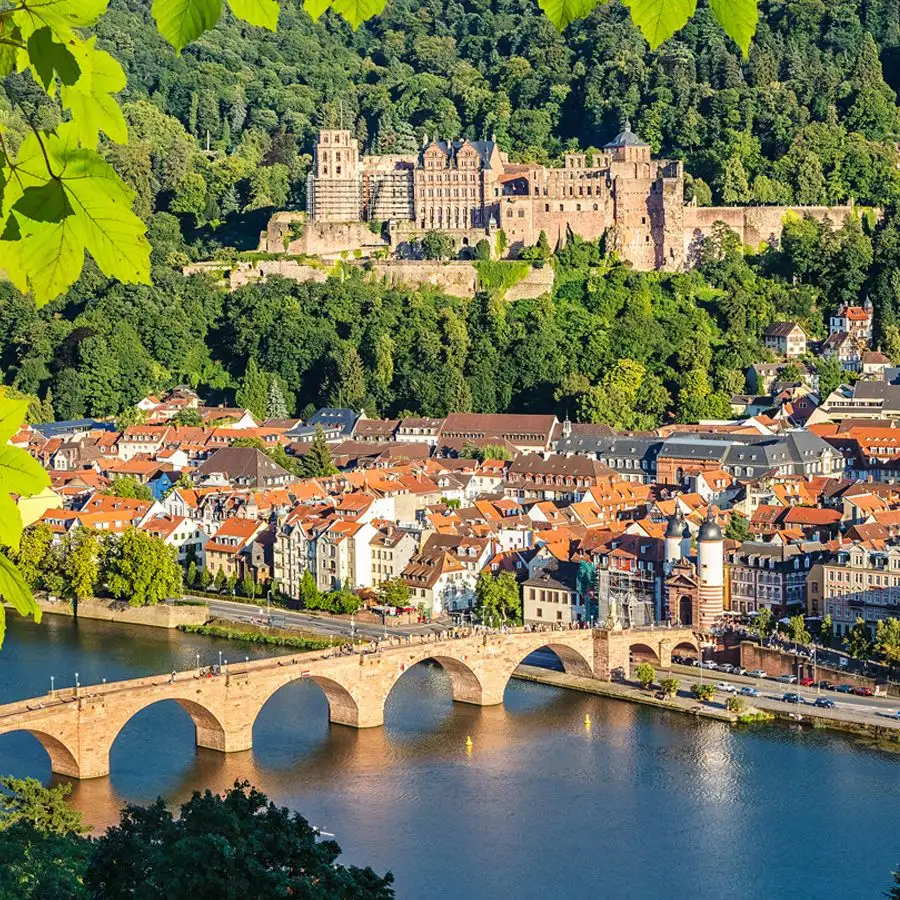
Day 5
Heidelberg
Day 5
Heidelberg




9:00 AM - 1:00 PM
Guided Walking Tour of Heidelberg
On this 4 hour tour, your guide will show you the highlights of Heidelberg and help you understand what makes this city so unique. Sites visited will include the Heidelberg University, the Old Bridge, Altstadt, Town Hall and Heidelberg Castle.
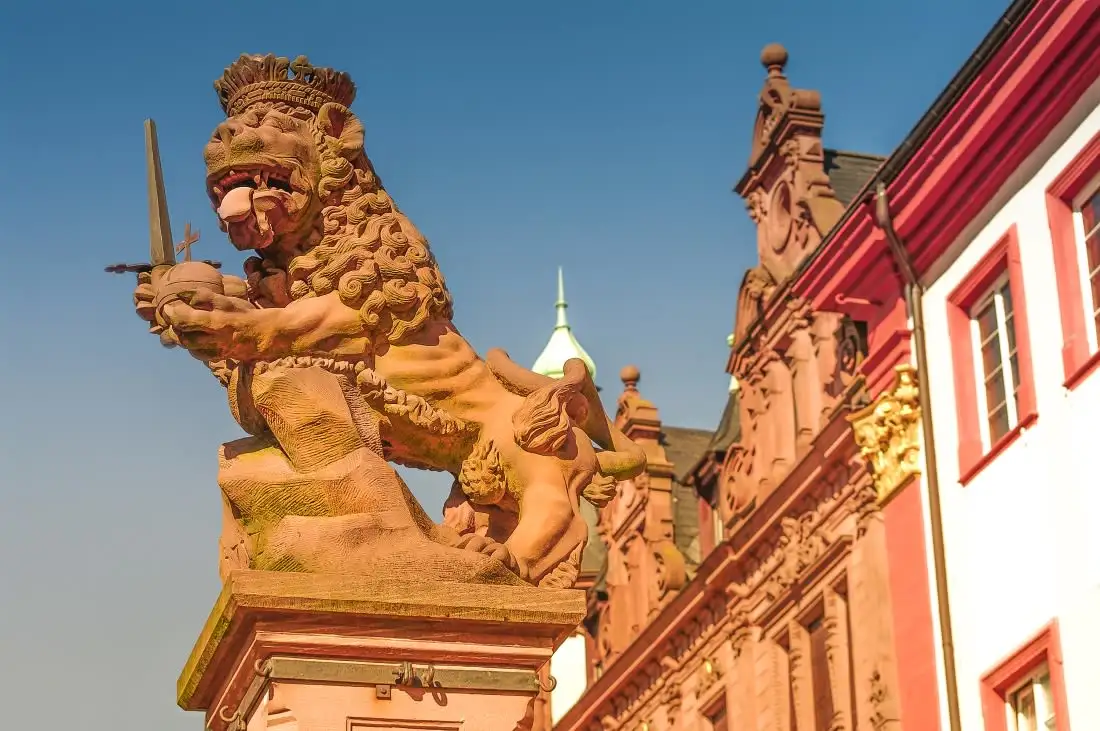
Altstadt
The light and colors of this historic city are a happy sight to behold.
Show More

Heidelberg University
Founded in 1386, this is Germany’s oldest and one of its most prestigious universities.
Show More

Altstadt
The light and colors of this historic city are a happy sight to behold.
Show More

Heidelberg University
Founded in 1386, this is Germany’s oldest and one of its most prestigious universities.
Show More

Altstadt
The light and colors of this historic city are a happy sight to behold.
Show More

Heidelberg University
Founded in 1386, this is Germany’s oldest and one of its most prestigious universities.
Show More
prev
next

Day 5
Heidelberg


Altstadt
 Highlight of Guided Walking Tour of Heidelberg
Highlight of Guided Walking Tour of HeidelbergThe light and colors of this historic city are a happy sight to behold.
The Old Town of Heidelberg, Germany, seduces with its views. Framed by the Neckar River and overlooked by the majestic Heidelberg Castle, its cobblestone streets, baroque architecture, and the oldest university in Germany beckon visitors. Highlights include the Hauptstrasse, a bustling pedestrian shopping street, and the historic Holy Spirit Church. Heidelberg's Old Town embodies the romantic spirit of Germany.
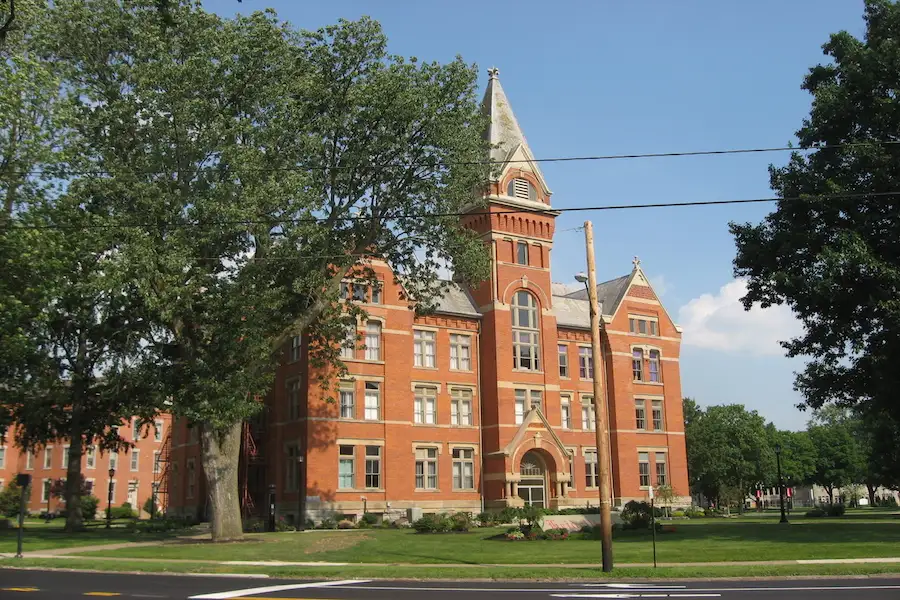
Heidelberg University
 Highlight of Guided Walking Tour of Heidelberg
Highlight of Guided Walking Tour of HeidelbergFounded in 1386, this is Germany’s oldest and one of its most prestigious universities.
The university is currently comprised of 12 faculties with over 30,000 German and international students enrolled. The college is known for its reputable science, art, law, and medical programs. The most historic facilities are located around the Universitätsplatz and dominated by the Alte Universität (Old University, 1712–28; on the south side) and the Neue Universität (New University, 1931; on the north side).

Altstadt
 Highlight of Guided Walking Tour of Heidelberg
Highlight of Guided Walking Tour of HeidelbergThe light and colors of this historic city are a happy sight to behold.
The Old Town of Heidelberg, Germany, seduces with its views. Framed by the Neckar River and overlooked by the majestic Heidelberg Castle, its cobblestone streets, baroque architecture, and the oldest university in Germany beckon visitors. Highlights include the Hauptstrasse, a bustling pedestrian shopping street, and the historic Holy Spirit Church. Heidelberg's Old Town embodies the romantic spirit of Germany.

Heidelberg University
 Highlight of Guided Walking Tour of Heidelberg
Highlight of Guided Walking Tour of HeidelbergFounded in 1386, this is Germany’s oldest and one of its most prestigious universities.
The university is currently comprised of 12 faculties with over 30,000 German and international students enrolled. The college is known for its reputable science, art, law, and medical programs. The most historic facilities are located around the Universitätsplatz and dominated by the Alte Universität (Old University, 1712–28; on the south side) and the Neue Universität (New University, 1931; on the north side).

Altstadt
 Highlight of Guided Walking Tour of Heidelberg
Highlight of Guided Walking Tour of HeidelbergThe light and colors of this historic city are a happy sight to behold.
The Old Town of Heidelberg, Germany, seduces with its views. Framed by the Neckar River and overlooked by the majestic Heidelberg Castle, its cobblestone streets, baroque architecture, and the oldest university in Germany beckon visitors. Highlights include the Hauptstrasse, a bustling pedestrian shopping street, and the historic Holy Spirit Church. Heidelberg's Old Town embodies the romantic spirit of Germany.

Heidelberg University
 Highlight of Guided Walking Tour of Heidelberg
Highlight of Guided Walking Tour of HeidelbergFounded in 1386, this is Germany’s oldest and one of its most prestigious universities.
The university is currently comprised of 12 faculties with over 30,000 German and international students enrolled. The college is known for its reputable science, art, law, and medical programs. The most historic facilities are located around the Universitätsplatz and dominated by the Alte Universität (Old University, 1712–28; on the south side) and the Neue Universität (New University, 1931; on the north side).
prev
next

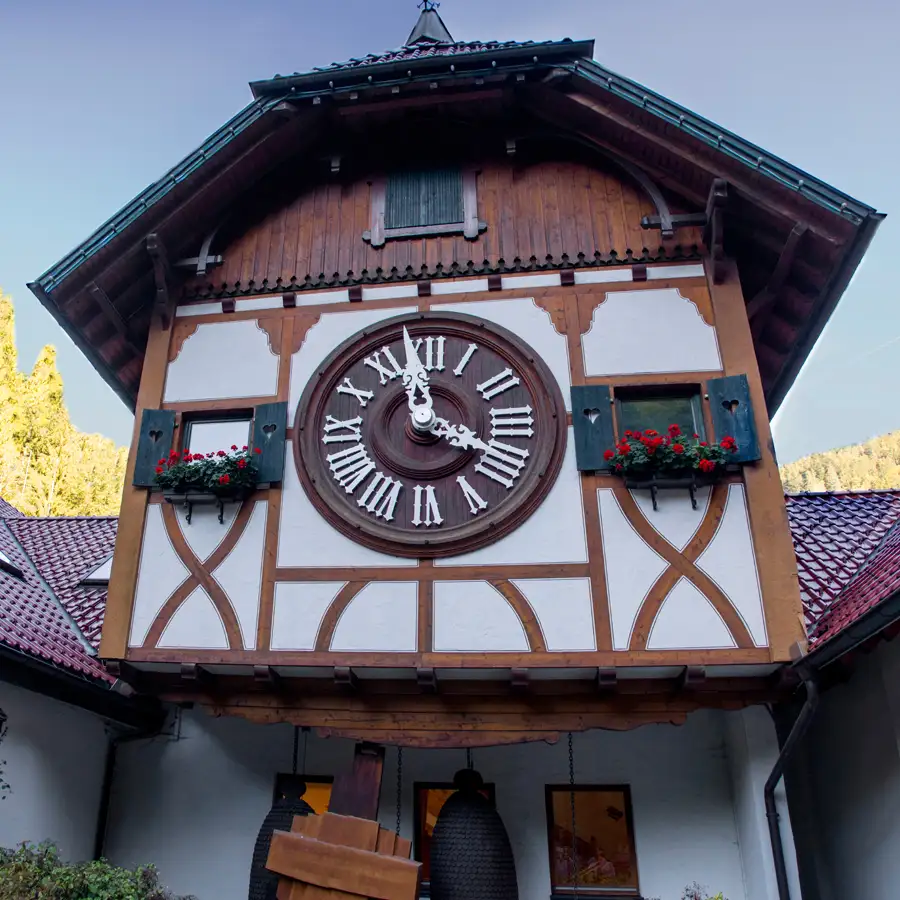
Day 6
Heidelberg
Day 6
Heidelberg


9:30 AM - 5:00 PM
Black Forest, Guided, by Vehicle
With over 6,000 square kilometres of rolling hills, magnificent mountains, and pristine old forests, the Black Forest (Schwarzwald in German) is truly a national treasure. Outdoors enthusiasts travelling to Heidelberg are not to miss out on a visit to this incredible region filled with some of Europe’s best hiking and mountain views.

Day 6
Heidelberg


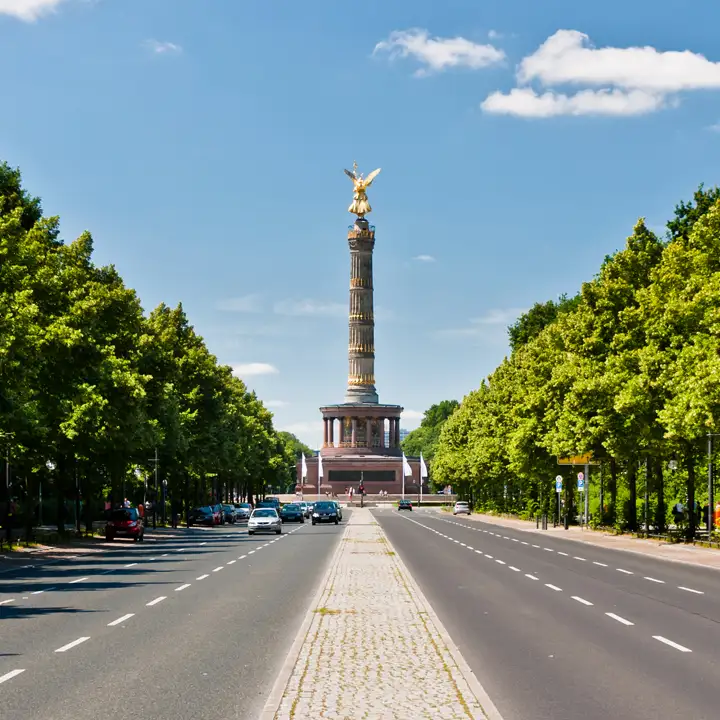
Day 7
Heidelberg to Berlin
Day 7
Heidelberg to Berlin





8:10 AM
Transfer to Rail Station
Most trains depart from Heidelberg Hbf station, the largest station in the city. Before spending money on a transfer, be sure to check whether your hotel is within easy walking distance. Also consider that public transport is the cheapest and sometimes fastest option, and the local tram network stops directly in front of the station. If staying at a hotel, they can order a reliable taxi. Some private transfers will even help with your bags. Uber is not yet available in Heidelberg.

Day 7
Heidelberg to Berlin


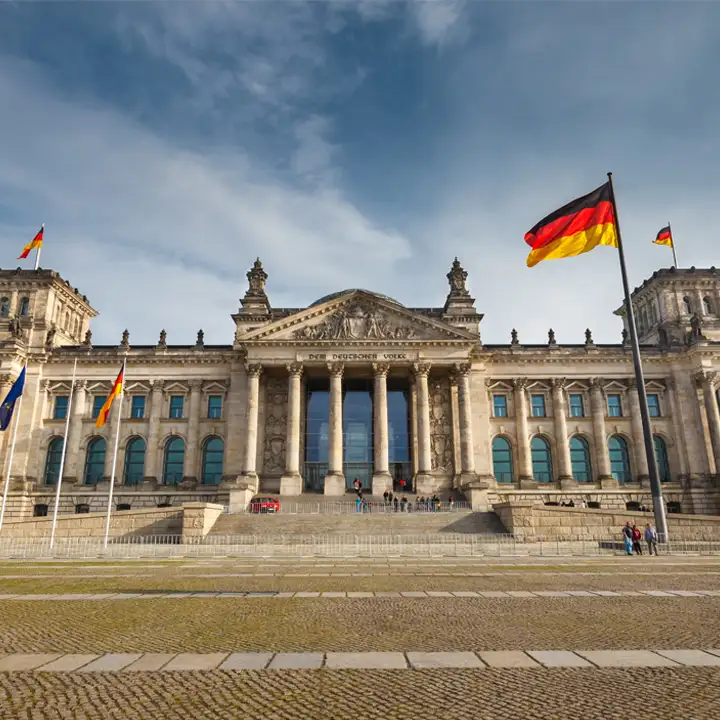
Day 8
Berlin
Day 8
Berlin



9:00 AM - 12:00 PM
Guided Walking Tour of Berlin
On this 3 hour tour, your guide will show you the highlights of Berlin and help you understand what makes this city so unique. Sites visited will include the boulevard Unter den Linden, the Gendarmenmarkt, Check Point Charlie, remnants of the Berlin Wall, Potsdamer Platz, the Holocaust Memorial, the Brandenburg Gate, and the Reichstag.
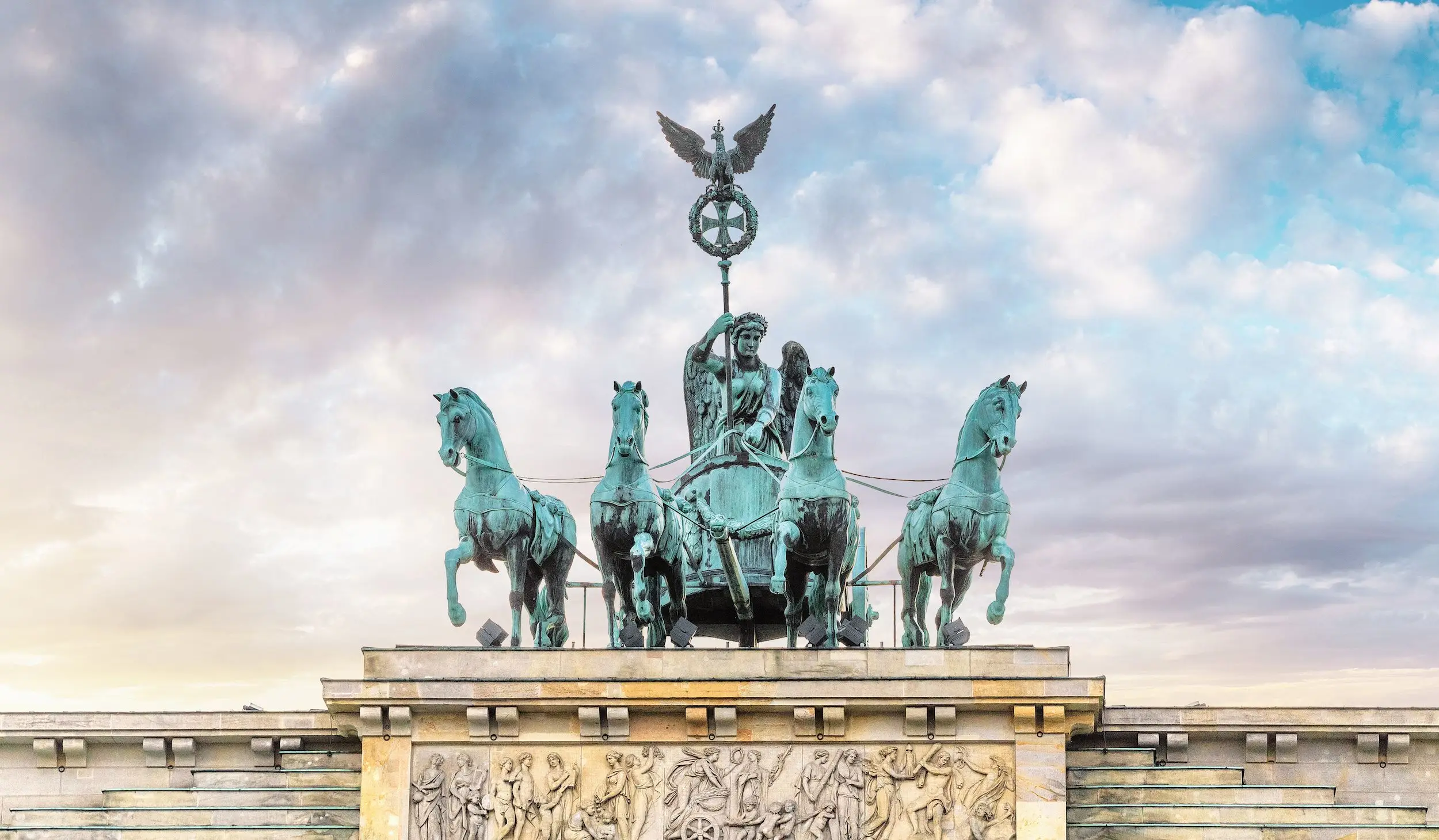
Brandenburg Gate
Quadriga. Hey, There's a Word to Know When Learning About this Historic Gate
Show More
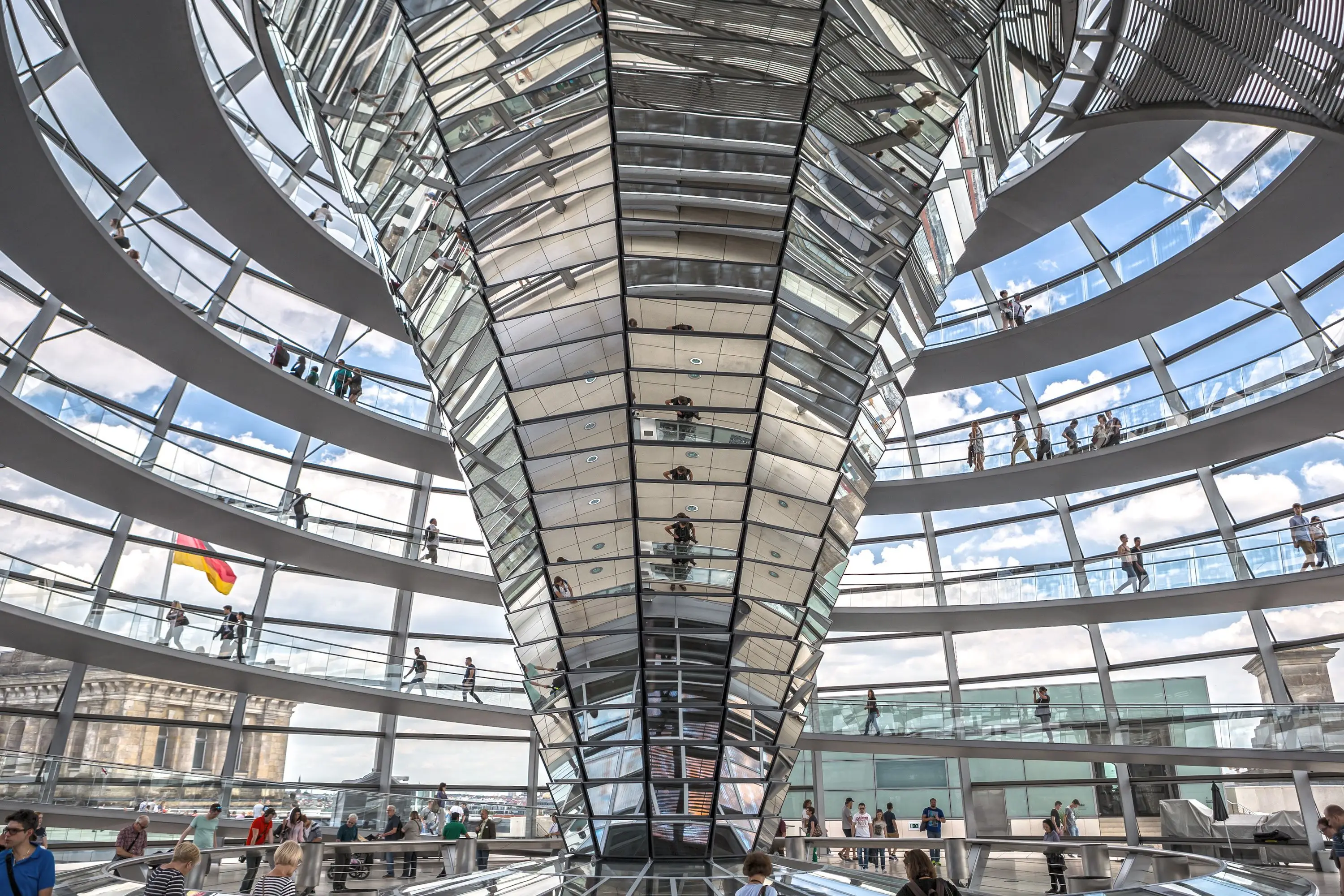
Reichstag
Make your way to the top of the dome enjoying amazing views and looking down at debating members of the German Parliament below.
Show More

Brandenburg Gate
Quadriga. Hey, There's a Word to Know When Learning About this Historic Gate
Show More

Reichstag
Make your way to the top of the dome enjoying amazing views and looking down at debating members of the German Parliament below.
Show More

Brandenburg Gate
Quadriga. Hey, There's a Word to Know When Learning About this Historic Gate
Show More

Reichstag
Make your way to the top of the dome enjoying amazing views and looking down at debating members of the German Parliament below.
Show More
prev
next

Day 8
Berlin


Brandenburg Gate
 Highlight of Guided Walking Tour of Berlin
Highlight of Guided Walking Tour of BerlinQuadriga. Hey, There's a Word to Know When Learning About this Historic Gate
The Brandenburg Gate was built as a symbol of peace, perverted into a symbol of power by the Nazis, and became a symbol of division during the Cold War. Now, however, it is a symbol of reunification. Completed in 1791, it was topped by the quadriga, a chariot drawn by four horses driven by the goddess of peace. Napoleon seized the quadriga as a spoil of war, but after his defeat, it was returned to the city and met by cheering crowds along the way, transforming the goddess of peace into a goddess of victory, holding a Germanic cross.

Reichstag
 Highlight of Guided Walking Tour of Berlin
Highlight of Guided Walking Tour of BerlinMake your way to the top of the dome enjoying amazing views and looking down at debating members of the German Parliament below.
Officially, the Reichstag is actually the Bundestag, which means the federal parliament. The Reichstag was reduced to a ruined shell by arson in 1933 and by World War II fighting, but it was rebuilt with a striking egg-shaped glass dome. Visitors are given a free audio guide that discusses the building’s history and architecture, while also orientating you to the sites of Berlin. It is an excellent introduction to the city. Note that it is usually necessary to book well in advance!

Brandenburg Gate
 Highlight of Guided Walking Tour of Berlin
Highlight of Guided Walking Tour of BerlinQuadriga. Hey, There's a Word to Know When Learning About this Historic Gate
The Brandenburg Gate was built as a symbol of peace, perverted into a symbol of power by the Nazis, and became a symbol of division during the Cold War. Now, however, it is a symbol of reunification. Completed in 1791, it was topped by the quadriga, a chariot drawn by four horses driven by the goddess of peace. Napoleon seized the quadriga as a spoil of war, but after his defeat, it was returned to the city and met by cheering crowds along the way, transforming the goddess of peace into a goddess of victory, holding a Germanic cross.

Reichstag
 Highlight of Guided Walking Tour of Berlin
Highlight of Guided Walking Tour of BerlinMake your way to the top of the dome enjoying amazing views and looking down at debating members of the German Parliament below.
Officially, the Reichstag is actually the Bundestag, which means the federal parliament. The Reichstag was reduced to a ruined shell by arson in 1933 and by World War II fighting, but it was rebuilt with a striking egg-shaped glass dome. Visitors are given a free audio guide that discusses the building’s history and architecture, while also orientating you to the sites of Berlin. It is an excellent introduction to the city. Note that it is usually necessary to book well in advance!

Brandenburg Gate
 Highlight of Guided Walking Tour of Berlin
Highlight of Guided Walking Tour of BerlinQuadriga. Hey, There's a Word to Know When Learning About this Historic Gate
The Brandenburg Gate was built as a symbol of peace, perverted into a symbol of power by the Nazis, and became a symbol of division during the Cold War. Now, however, it is a symbol of reunification. Completed in 1791, it was topped by the quadriga, a chariot drawn by four horses driven by the goddess of peace. Napoleon seized the quadriga as a spoil of war, but after his defeat, it was returned to the city and met by cheering crowds along the way, transforming the goddess of peace into a goddess of victory, holding a Germanic cross.

Reichstag
 Highlight of Guided Walking Tour of Berlin
Highlight of Guided Walking Tour of BerlinMake your way to the top of the dome enjoying amazing views and looking down at debating members of the German Parliament below.
Officially, the Reichstag is actually the Bundestag, which means the federal parliament. The Reichstag was reduced to a ruined shell by arson in 1933 and by World War II fighting, but it was rebuilt with a striking egg-shaped glass dome. Visitors are given a free audio guide that discusses the building’s history and architecture, while also orientating you to the sites of Berlin. It is an excellent introduction to the city. Note that it is usually necessary to book well in advance!
prev
next


Day 9
Berlin
Day 9
Berlin


Morning to Early Evening
Potsdam
For most visitors, Potsdam means Sanssouci, Frederick the Great's palace and his majestically landscaped park of architectural treasures that once competed with Berlin as the grand Prussian capital. But there is much more to Potsdam than just Sanssouci. From taking a cruise through pristine lakes, exploring the charming city center, or wandering the numerous tranquil parks studded with fantastical palaces, visitors will be hard pressed to fit a visit to Potsdam into just one day. In fact many choose to rent a bike to fit more in, as well they should, as Potsdam is the perfect place to discover on a bicycle.

Sansscouci Palace
See how Frederick the Great lived in his beautiful baroque summer palace and gardens.
Show More

Neues Palais
Tour a colossal palace building built by Frederick the Great as a demonstration of the Prussian state’s power and wealth.
Show More

Bridge of Spies
Furtively cross the Bridge of Spies which once separated East and West Berlin
Show More

Dutch Quarter
Visit Holland in this delightful quarter of Potsdam.
Show More

Sansscouci Palace
See how Frederick the Great lived in his beautiful baroque summer palace and gardens.
Show More

Neues Palais
Tour a colossal palace building built by Frederick the Great as a demonstration of the Prussian state’s power and wealth.
Show More

Bridge of Spies
Furtively cross the Bridge of Spies which once separated East and West Berlin
Show More

Dutch Quarter
Visit Holland in this delightful quarter of Potsdam.
Show More
prev
next

Day 9
Berlin


Sansscouci Palace
 Highlight of Potsdam
Highlight of PotsdamSee how Frederick the Great lived in his beautiful baroque summer palace and gardens.
In 1744 Frederick built a terraced garden in his Sanssouci Park to cultivate plums, figs and wine on Potsdam’s doorstep. But because the view was so exceptionally beautiful, the king decided to build a large and elegant summer residence above the terraces just a year later.

Neues Palais
 Highlight of Potsdam
Highlight of PotsdamTour a colossal palace building built by Frederick the Great as a demonstration of the Prussian state’s power and wealth.
Neues Palais contrasts hugely with the intimate and rather modest Sanssouci Palace, with its grand banquet halls, sumptuous galleries and regally designed suites, as well as a Baroque palace theater in the southern wing. The last imperial resident was Kaiser Wilhelm II, who fled from there after World War I with much of the palace's furnishings and content.

Bridge of Spies
 Highlight of Potsdam
Highlight of PotsdamFurtively cross the Bridge of Spies which once separated East and West Berlin
The Glienicke Bridge was the site of Cold War intrigue and drama, earning it the title role in the 2015 Tom Hanks movie, Bridge of Spies. The bridge was off-limits to citizens on both sides of the border and therefore it was the site of the famous prisoner exchange which brought captured American pilot Gary Powers home. In 1988 three citizens of Potsdam (then part of East Germany) spectacularly broke through the border in a truck.

Dutch Quarter
 Highlight of Potsdam
Highlight of PotsdamVisit Holland in this delightful quarter of Potsdam.
The Prussian King Friedrich Wilhelm I - the Soldier King and the father of Frederick the Great - wanted to extend his garrison quarters in Potsdam and needed skilled Dutch workers. So he had the Dutch builders already in his service construct the 134 gabled, red-brick houses in Dutch style, attracting further Dutch immigrants. Nowadays, its streets contain galleries, cafes and antique shops, all you need for a lackadaisical Pottsdammer afternoon.

Sansscouci Palace
 Highlight of Potsdam
Highlight of PotsdamSee how Frederick the Great lived in his beautiful baroque summer palace and gardens.
In 1744 Frederick built a terraced garden in his Sanssouci Park to cultivate plums, figs and wine on Potsdam’s doorstep. But because the view was so exceptionally beautiful, the king decided to build a large and elegant summer residence above the terraces just a year later.

Neues Palais
 Highlight of Potsdam
Highlight of PotsdamTour a colossal palace building built by Frederick the Great as a demonstration of the Prussian state’s power and wealth.
Neues Palais contrasts hugely with the intimate and rather modest Sanssouci Palace, with its grand banquet halls, sumptuous galleries and regally designed suites, as well as a Baroque palace theater in the southern wing. The last imperial resident was Kaiser Wilhelm II, who fled from there after World War I with much of the palace's furnishings and content.

Bridge of Spies
 Highlight of Potsdam
Highlight of PotsdamFurtively cross the Bridge of Spies which once separated East and West Berlin
The Glienicke Bridge was the site of Cold War intrigue and drama, earning it the title role in the 2015 Tom Hanks movie, Bridge of Spies. The bridge was off-limits to citizens on both sides of the border and therefore it was the site of the famous prisoner exchange which brought captured American pilot Gary Powers home. In 1988 three citizens of Potsdam (then part of East Germany) spectacularly broke through the border in a truck.

Dutch Quarter
 Highlight of Potsdam
Highlight of PotsdamVisit Holland in this delightful quarter of Potsdam.
The Prussian King Friedrich Wilhelm I - the Soldier King and the father of Frederick the Great - wanted to extend his garrison quarters in Potsdam and needed skilled Dutch workers. So he had the Dutch builders already in his service construct the 134 gabled, red-brick houses in Dutch style, attracting further Dutch immigrants. Nowadays, its streets contain galleries, cafes and antique shops, all you need for a lackadaisical Pottsdammer afternoon.
prev
next

Day 10
Depart Berlin
Day 10
Depart Berlin

To Be Determined
Airport Transfer by Taxi or Rail
The most affordable and fast way to reach Berlin Brandenburg airport is by train. The Airport Express train takes only 30 minutes and leaves directly from the main station in central Berlin (Berlin Hbf). Regional and S-Bahn trains also depart from other locations in Berlin. Berlin taxis are generally reliable and honest, so you may wish to take a taxi or Uber, although this is more expensive than the train and puts you at the mercy of traffic. You can also arrange a private transfer. If you are picked up about 3 hours before your departure time, you should arrive at the airport with about two hours to spare, depending on traffic. If you are leaving during rush hour, you may want to budget an extra fifteen to thirty minutes.
Day 10
Depart Berlin


What's Included In Adventure in Paris & Germany Trip

Pre-Paid Tours and Activities:
- Private Guided Walking Tour of the Center of Paris
- Monet in Giverny Privately Guided Excursion
- Guided Walking Tour of the Heidelberg's Altstadt and Castle
- Guided Excursion to the Black Forest
- Highlights of Berlin Guided Walking Tour
- City Card for Berlin, including discounts to many popular attractions

Pre-Paid Transportation:
- 2nd Class Train Tickets from Paris to Mannheim
- 2nd Class Train Tickets from Mannheim to Heidelberg
- 2nd Class Train Tickets from Heidelberg to Mannheim
- 2nd Class Train Tickets from Mannheim to Berlin
- Public Transport Tickets for Berlin

Accommodation:
- 3 nights at a hotel of your choice in Paris
- 3 nights at a hotel of your choice in Heidelberg
- 3 nights at a hotel of your choice in Berlin

Go Real Travel Mobile App:
- Itinerary Plan & Reservations Info
- Points of Interest
- Detailed Travel Information
- Maps & Directions
Other Trips You May Like
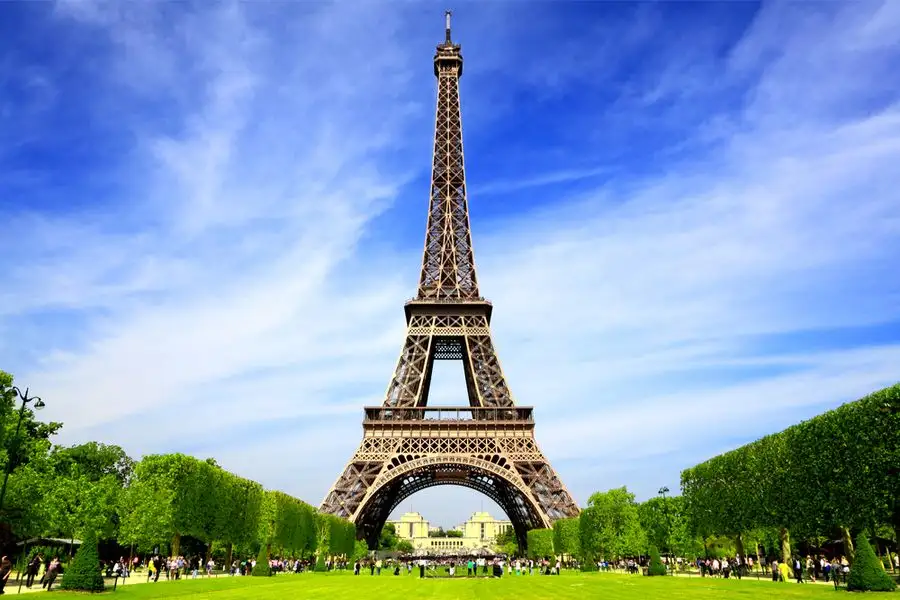
21 Days
From$5789USD
Jewels of Europe: Art, History and Waterways in Paris, Amsterdam, Berlin, Prague, Vienna & Budapest

France, Netherlands, Germany, Czech Republic, Austria, Hungary

21 Days
From$5199USD
Canals, Castles, and Culture: A Three-Week Journey in the Netherlands & Germany

Netherlands, Germany

21 Days
From$5899USD

4 Days
From$775USD

7 Days
From$1999USD

7 Days
From$0USD

10 Days
From$2995USD

14 Days
From$4050USD

17 Days
From$4530.9234235USD

21 Days
From$5789USD
Jewels of Europe: Art, History and Waterways in Paris, Amsterdam, Berlin, Prague, Vienna & Budapest

France, Netherlands, Germany, Czech Republic, Austria, Hungary

21 Days
From$5199USD
Canals, Castles, and Culture: A Three-Week Journey in the Netherlands & Germany

Netherlands, Germany

21 Days
From$5899USD

4 Days
From$775USD

7 Days
From$1999USD

7 Days
From$0USD

10 Days
From$2995USD

14 Days
From$4050USD

17 Days
From$4530.9234235USD
prev
next
Featured Blogs
prev
next
Our Customers Say It Best
Marianne Strydom, Paarl, South Africa
I just wanted to thank you for organizing an amazing trip for me – I packed in so much in such a short period of time and everything was just perfect. The way you do things makes it possible to really get to know the destination, which for me as a travel agent could not have been better. 

Otto Chuy, Los Angeles, California
I am still surprised how everything worked as planned, without a hitch. All instructions in your itinerary were precise and correct. Your suggestions and comments in each of the locations we went to were very helpful. All your guides, without exception, were wonderful and exactly on time. 

Malini Dutta, Boston, Massachusetts
We can't thank you enough for the detailed plans, maps, and suggestions. It really felt that someone was holding our hands and showing us around. We had all the excitement of discovering foreign lands, with none of the problems that can happen while negotiating unfamiliar places. In fact, all the cities felt like home within a few hours of arriving and exploring. 

Bev and Mark Frankel, Williamsburg, Virginia
We could not be more pleased with Go Real Travel! You took the guess work out of things like public transport but still managed to allow us the freedom to tour as we wanted. Our guides were exceptional and every time I saw a Viking Cruise tour of 25 people, I realized the quality experience we were getting with Go Real. 

Marianne Strydom, Paarl, South Africa
I just wanted to thank you for organizing an amazing trip for me – I packed in so much in such a short period of time and everything was just perfect. The way you do things makes it possible to really get to know the destination, which for me as a travel agent could not have been better. 

Otto Chuy, Los Angeles, California
I am still surprised how everything worked as planned, without a hitch. All instructions in your itinerary were precise and correct. Your suggestions and comments in each of the locations we went to were very helpful. All your guides, without exception, were wonderful and exactly on time. 

Malini Dutta, Boston, Massachusetts
We can't thank you enough for the detailed plans, maps, and suggestions. It really felt that someone was holding our hands and showing us around. We had all the excitement of discovering foreign lands, with none of the problems that can happen while negotiating unfamiliar places. In fact, all the cities felt like home within a few hours of arriving and exploring. 

Bev and Mark Frankel, Williamsburg, Virginia
We could not be more pleased with Go Real Travel! You took the guess work out of things like public transport but still managed to allow us the freedom to tour as we wanted. Our guides were exceptional and every time I saw a Viking Cruise tour of 25 people, I realized the quality experience we were getting with Go Real. 



Explore cities in more detail
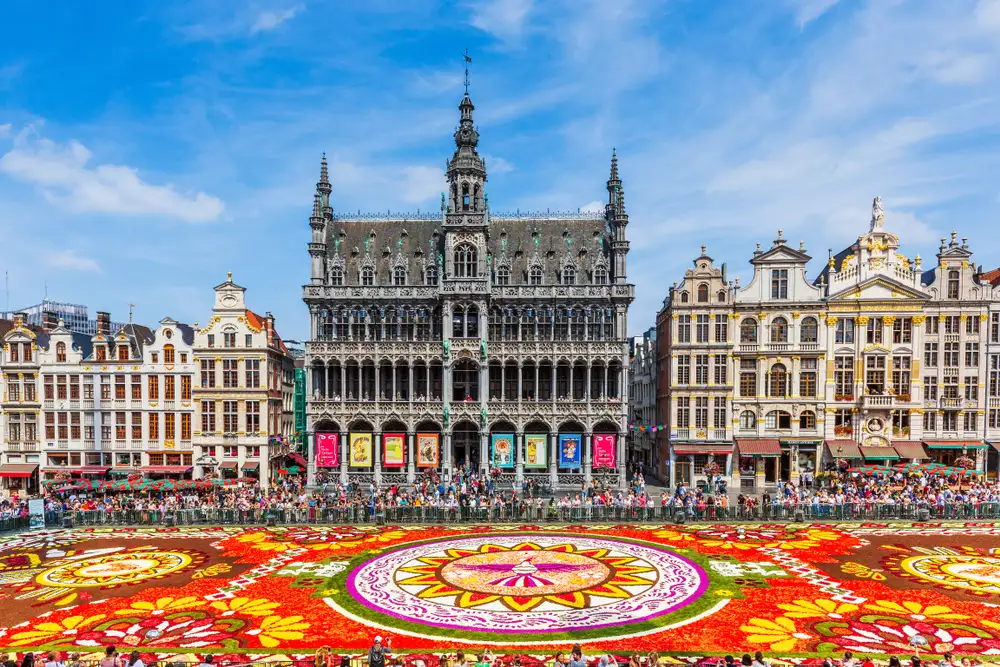
Brussels
It feels as though everything in Brussels is tinted with gold. From the gilded rooftops of the old houses on the Grand Palace to the foil-wrapped bonbons piled in chocolatier windows, Brussels seems to sparkle and wink at you around every corner. Aside from the lustrous architecture and Trappist ales, this shiny city is probably still best known for its iconic street food options: salty, golden fries, and fluffy, honey-colored waffles. While a major political center, home of the EU and NATO, don’t be fooled by Brussels stern ‘Eurocratic’ facade. Brussels revels in cheeky humor and mischief. So much so, Brussel’s beloved mascot, the ‘Manneken Pis’, is a statue of a small child urinating into a fountain. The city takes great pleasure in dressing this statue in festive-themed costumes. It’s no surprise that the artist Magritte, one of the great visual tricksters of the 20th century, called Brussels home. After a few days exploring the city, and taking in its sights and scenes, you’re sure to come away smiling.

Learn About Brussels
Build Brussels Trip

Bayeux
Bayeux is an old, well-preserved town in Normandy. Most known as the backdrop for the Battle of Normandy, visitors who descend from WWII veterans often feel a special, somber connection to this part of France. On June 6, 1944, otherwise known as ‘D-Day’, thousands of Allied troops landed on Normandy’s Atlantic Coast, with a mission to drive out the German occupying forces. More than 120,000 Allied soldiers died in combat over the next three months. Although victorious, the campaign for Normandy caused the highest number of losses for America in all of WWII. A landscape of remembrance, on a tour of the Norman countryside you’ll see the remains of tanks, aircraft, and military bunkers. Special cemeteries and memorials in the area pay tribute to the sacrifice of fallen soldiers. Despite the destruction of nearly every neighboring village, the town of Bayeux endured WWII unscathed. Along with all its medieval architecture, the town’s most precious treasure, the Bayeux Tapestry, was miraculously spared. Stitched in the 11th century, the Tapestry tells the story of William the Conqueror’s invasion of England in 1066. As you view the tapestry and stroll through the charming streets of Bayeux, the sweeping cathedral spires and gently flowing River Aure cast you back to another time. A landscape of war, but also remembrance, a trip to Bayeux and Normandy will deepen your appreciation and respect for the past.

Learn About Bayeux
Build Bayeux Trip
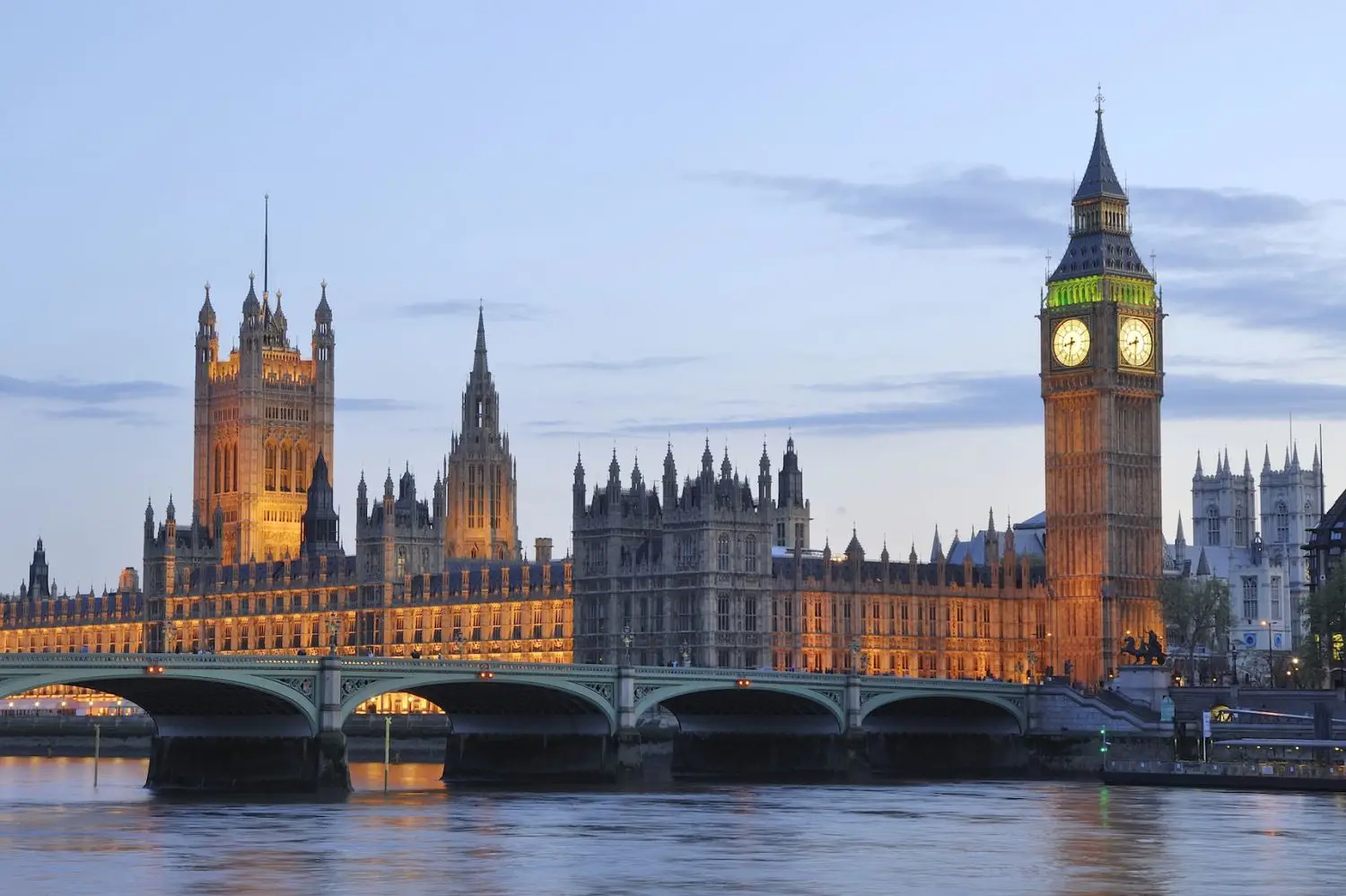
London
London is a city where centuries of royal history, cultural heritage, and cosmopolitan life come together to create a thrilling travel experience. At its core stand iconic landmarks like Big Ben, Westminster Abbey, and the Tower of London, each telling tales of monarchs, revolutions, and traditions that have shaped the nation. Stroll along the River Thames, past the grandeur of Parliament and the London Eye, and dive into the buzz of neighborhoods like Covent Garden, Soho, and Chinatown—each brimming with character, cuisine, and charm. From the stately Mall leading to Buckingham Palace to the vibrant energy of Piccadilly Circus, London is a city of contrasts where old and new exist in vivid harmony. Culinary adventures await across its boroughs, from refined afternoon teas to global street food and traditional pub fare. Whether you’re catching a play in the West End, exploring world-class museums, or unwinding in one of its royal parks, London invites you to discover something extraordinary at every turn.

Learn About London
Build London Trip
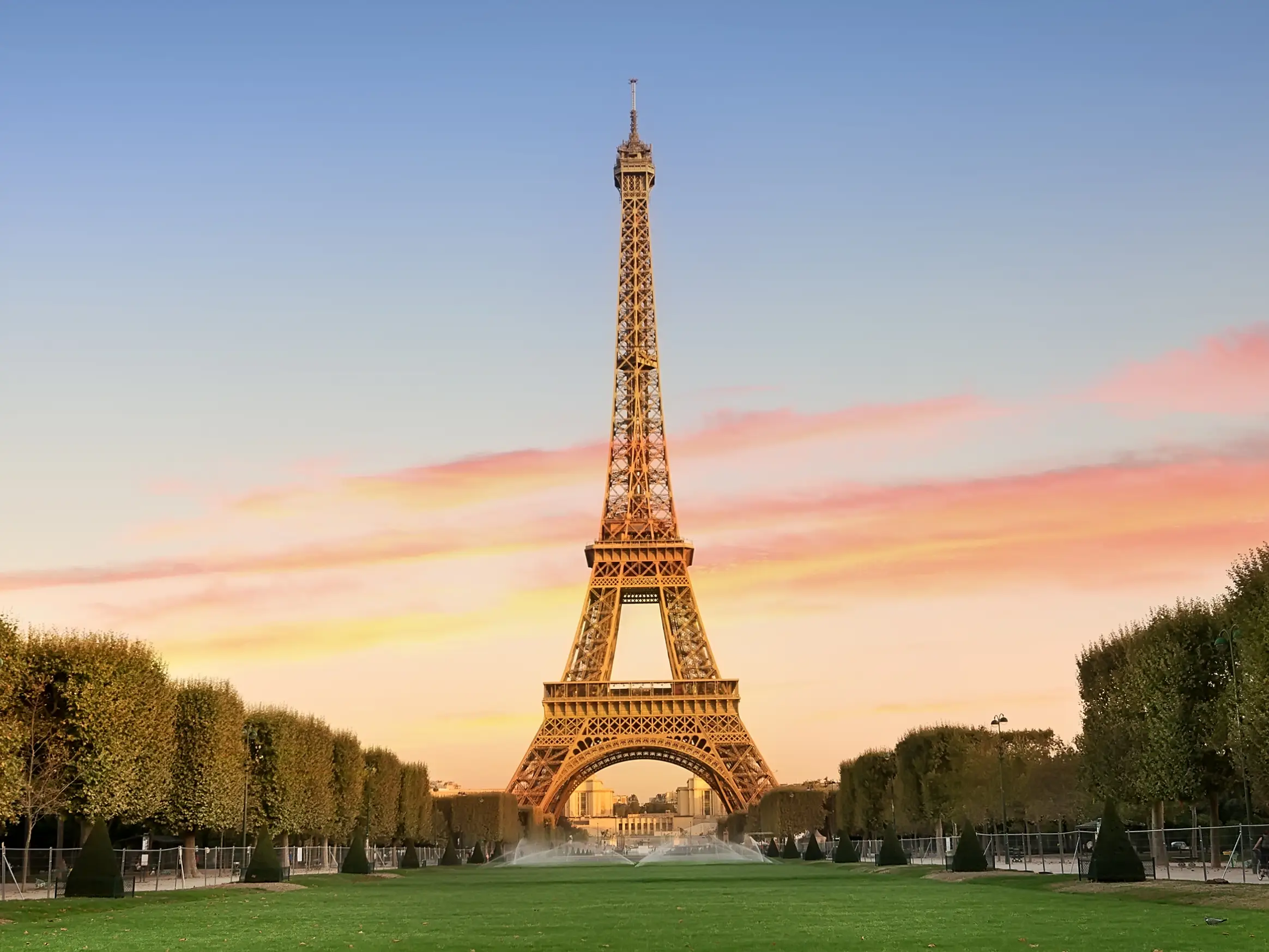
Paris
The magic of Paris is undeniable. This is the most romantic destination in Europe, and surely the number one bucket list destination of all time. If you want to say you've traveled, you have to visit Paris at least once. Along with classic must-sees like the Eiffel Tower and the Sacre-Coeur, there is so much to see and do in Paris that it helps to narrow it down by interest. Fashion and shopping enthusiast? Look no further than the Galeries Lafayette, Avenue des Champs-Élysées, or the Marais. Art aficionado? Once you're done with the Louvre, make a start on the Musée d'Orsay. History buffs won't be able to walk a block without uncovering a monument to Napoleon or Louis XIV. If you visit Paris with a foodie, be warned — you'll gaze in a lot of patisserie windows, and sample your weight in croissants. Because Paris always has so much on offer, it never grows old. At dusk, as you stroll the wide boulevards past Haussmann apartment buildings and sharply dressed Parisians, or gaze down at the city from the hill at Montmarte, you might find yourself saying 'Paris Je t' aime'. This is, after all, the City of Love.

Learn About Paris
Build Paris Trip
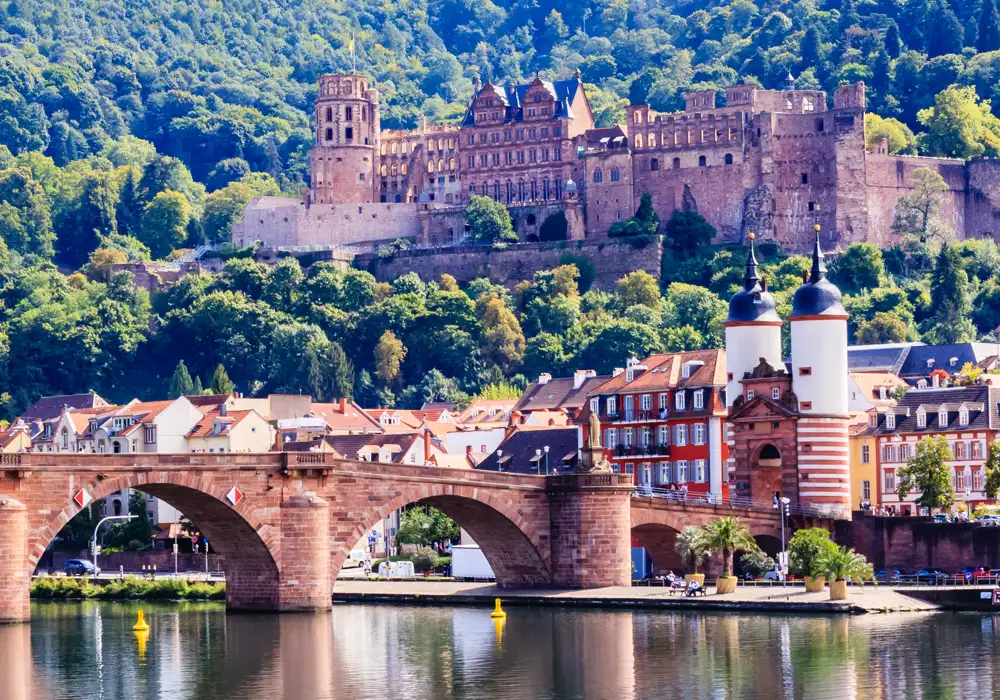
Heidelberg
Heidelberg is buried deep in the forests of southwest Germany. Flanking both sides of the Neckar River, Heidelberg's red and white baroque old town looks like something from a book of folktales. On the hillside above the town, you'll see the looming, tumbledown remains of Heidelberg's Gothic-Renaissance castle, Heidelberger Schloss. The subject of strange local legends, Heidelberg Castle was once home to knights, a famous court jester, and even a witch. It is said the first person who pulls out an iron ring embedded in one of the great doors will be the castle's true owner. Surely on your visit, it's worth a try? Across the river, follow in the footsteps of scholars on a hiking trail known as The Philosophers’ Way. Heidelberg University is the oldest in Germany, and its leafy, temple-like campus contributes to the gentle, contemplative atmosphere of the town. A poetic city with the dreamy feel of a watercolor painting, it's no wonder Heidelberg inspired writers like Mark Twain and Johann Wolfgang von Goethe. The city has even been recognized by UNESCO as a City of Literature. Especially on misty, grey days, Heidelberg has a way of sweeping you up in its romanticism.

Learn About Heidelberg
Build Heidelberg Trip
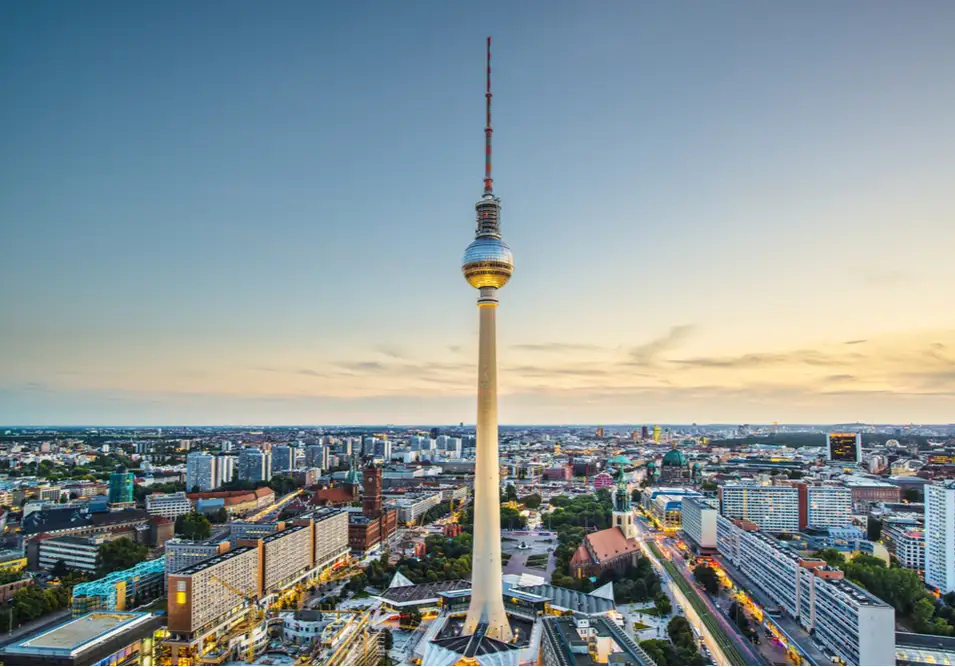
Berlin
Since the fall of its notorious wall, Berlin’s unification has seen it go from strength to strength. No wonder the city feels like it hasn’t stopped partying since the 1990s. There is so much to celebrate here. Fueled by the robust economy, a thriving tech scene, and straight-up German bonhomie, when you step into Berlin you’ll soon be caught up in its spirit. For all this gusto, Berlin hasn’t forgotten its troubled past. A visit to Berlin is to bear witness to history. Portions of the wall remain intact, and the city’s Jewish Museum offers a detailed, emotional examination of the Holocaust. Inside the reconstructed Reichstag, every attempt has been made to preserve the parliament’s beleaguered history. The buildings' glass dome addition feels less like a triumphal crown and more like a freshly healed battle scar. Days in Berlin are easily spent wandering from a cafe to the cultural institutions on Museum Island, or over to the Charlottenburg Palace. By night, crowds wander through the booming bars and nightclubs or gaze upon the floodlit Brandenburg Gate and Victory Column monuments. An international city that can offer something to everyone, Berlin is an unmissable stop on your German journey.

Learn About Berlin
Build Berlin Trip

Brussels
It feels as though everything in Brussels is tinted with gold. From the gilded rooftops of the old houses on the Grand Palace to the foil-wrapped bonbons piled in chocolatier windows, Brussels seems to sparkle and wink at you around every corner. Aside from the lustrous architecture and Trappist ales, this shiny city is probably still best known for its iconic street food options: salty, golden fries, and fluffy, honey-colored waffles. While a major political center, home of the EU and NATO, don’t be fooled by Brussels stern ‘Eurocratic’ facade. Brussels revels in cheeky humor and mischief. So much so, Brussel’s beloved mascot, the ‘Manneken Pis’, is a statue of a small child urinating into a fountain. The city takes great pleasure in dressing this statue in festive-themed costumes. It’s no surprise that the artist Magritte, one of the great visual tricksters of the 20th century, called Brussels home. After a few days exploring the city, and taking in its sights and scenes, you’re sure to come away smiling.

Learn About Brussels
Build Brussels Trip

Bayeux
Bayeux is an old, well-preserved town in Normandy. Most known as the backdrop for the Battle of Normandy, visitors who descend from WWII veterans often feel a special, somber connection to this part of France. On June 6, 1944, otherwise known as ‘D-Day’, thousands of Allied troops landed on Normandy’s Atlantic Coast, with a mission to drive out the German occupying forces. More than 120,000 Allied soldiers died in combat over the next three months. Although victorious, the campaign for Normandy caused the highest number of losses for America in all of WWII. A landscape of remembrance, on a tour of the Norman countryside you’ll see the remains of tanks, aircraft, and military bunkers. Special cemeteries and memorials in the area pay tribute to the sacrifice of fallen soldiers. Despite the destruction of nearly every neighboring village, the town of Bayeux endured WWII unscathed. Along with all its medieval architecture, the town’s most precious treasure, the Bayeux Tapestry, was miraculously spared. Stitched in the 11th century, the Tapestry tells the story of William the Conqueror’s invasion of England in 1066. As you view the tapestry and stroll through the charming streets of Bayeux, the sweeping cathedral spires and gently flowing River Aure cast you back to another time. A landscape of war, but also remembrance, a trip to Bayeux and Normandy will deepen your appreciation and respect for the past.

Learn About Bayeux
Build Bayeux Trip

London
London is a city where centuries of royal history, cultural heritage, and cosmopolitan life come together to create a thrilling travel experience. At its core stand iconic landmarks like Big Ben, Westminster Abbey, and the Tower of London, each telling tales of monarchs, revolutions, and traditions that have shaped the nation. Stroll along the River Thames, past the grandeur of Parliament and the London Eye, and dive into the buzz of neighborhoods like Covent Garden, Soho, and Chinatown—each brimming with character, cuisine, and charm. From the stately Mall leading to Buckingham Palace to the vibrant energy of Piccadilly Circus, London is a city of contrasts where old and new exist in vivid harmony. Culinary adventures await across its boroughs, from refined afternoon teas to global street food and traditional pub fare. Whether you’re catching a play in the West End, exploring world-class museums, or unwinding in one of its royal parks, London invites you to discover something extraordinary at every turn.

Learn About London
Build London Trip

Paris
The magic of Paris is undeniable. This is the most romantic destination in Europe, and surely the number one bucket list destination of all time. If you want to say you've traveled, you have to visit Paris at least once. Along with classic must-sees like the Eiffel Tower and the Sacre-Coeur, there is so much to see and do in Paris that it helps to narrow it down by interest. Fashion and shopping enthusiast? Look no further than the Galeries Lafayette, Avenue des Champs-Élysées, or the Marais. Art aficionado? Once you're done with the Louvre, make a start on the Musée d'Orsay. History buffs won't be able to walk a block without uncovering a monument to Napoleon or Louis XIV. If you visit Paris with a foodie, be warned — you'll gaze in a lot of patisserie windows, and sample your weight in croissants. Because Paris always has so much on offer, it never grows old. At dusk, as you stroll the wide boulevards past Haussmann apartment buildings and sharply dressed Parisians, or gaze down at the city from the hill at Montmarte, you might find yourself saying 'Paris Je t' aime'. This is, after all, the City of Love.

Learn About Paris
Build Paris Trip

Heidelberg
Heidelberg is buried deep in the forests of southwest Germany. Flanking both sides of the Neckar River, Heidelberg's red and white baroque old town looks like something from a book of folktales. On the hillside above the town, you'll see the looming, tumbledown remains of Heidelberg's Gothic-Renaissance castle, Heidelberger Schloss. The subject of strange local legends, Heidelberg Castle was once home to knights, a famous court jester, and even a witch. It is said the first person who pulls out an iron ring embedded in one of the great doors will be the castle's true owner. Surely on your visit, it's worth a try? Across the river, follow in the footsteps of scholars on a hiking trail known as The Philosophers’ Way. Heidelberg University is the oldest in Germany, and its leafy, temple-like campus contributes to the gentle, contemplative atmosphere of the town. A poetic city with the dreamy feel of a watercolor painting, it's no wonder Heidelberg inspired writers like Mark Twain and Johann Wolfgang von Goethe. The city has even been recognized by UNESCO as a City of Literature. Especially on misty, grey days, Heidelberg has a way of sweeping you up in its romanticism.

Learn About Heidelberg
Build Heidelberg Trip

Berlin
Since the fall of its notorious wall, Berlin’s unification has seen it go from strength to strength. No wonder the city feels like it hasn’t stopped partying since the 1990s. There is so much to celebrate here. Fueled by the robust economy, a thriving tech scene, and straight-up German bonhomie, when you step into Berlin you’ll soon be caught up in its spirit. For all this gusto, Berlin hasn’t forgotten its troubled past. A visit to Berlin is to bear witness to history. Portions of the wall remain intact, and the city’s Jewish Museum offers a detailed, emotional examination of the Holocaust. Inside the reconstructed Reichstag, every attempt has been made to preserve the parliament’s beleaguered history. The buildings' glass dome addition feels less like a triumphal crown and more like a freshly healed battle scar. Days in Berlin are easily spent wandering from a cafe to the cultural institutions on Museum Island, or over to the Charlottenburg Palace. By night, crowds wander through the booming bars and nightclubs or gaze upon the floodlit Brandenburg Gate and Victory Column monuments. An international city that can offer something to everyone, Berlin is an unmissable stop on your German journey.

Learn About Berlin
Build Berlin Trip
prev
next


 Map of Your Itinerary Route
Map of Your Itinerary Route
Zoom In to the cities to see your itinerary in more detail


 4.8
4.8 